Springing Forward to Better Sleep
- Details
- Written by Dr. Fulvia Milite
- Category: Health
 About 70 million Americans suffer from some type of sleep disorder, but there is hope.
About 70 million Americans suffer from some type of sleep disorder, but there is hope.
It’s no coincidence that this year’s Sleep Awareness Week runs March 8-14, right at the kickoff of Daylight Saving’s Time (DST), which this year is Sunday, March 8. As we spring ahead to longer days and lighter evenings, many people who struggle with getting adequate slumber bemoan the loss of that one precious hour.
It may sound silly, but that one hour can have a long lasting effect. The American Academy of Sleep Medicine recently summarized studies regarding the sleep health effects of DST and found that:
Moving into or out of DST has adverse effects on sleep/wake patterns that last about 5-7 days; and
The effects of changing to DST are probably most notable for those who enter the change with insufficient sleep.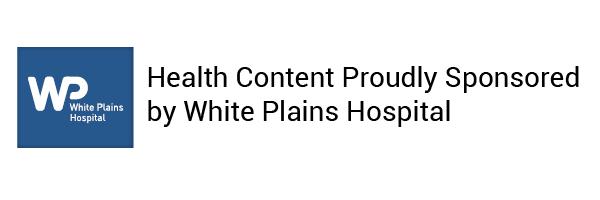
In America, 70% of adults report that they obtain insufficient sleep at least one night a month, and 11% report insufficient sleep every night. Whether because of medical disorders, work schedules, or a 24/7 lifestyle, there is a pervasive restlessness and unfortunately, many people today still measure their productivity by how little sleep they get.
The claim “I only got five hours of sleep last night” has almost become a measure of an individual’s dedication to their profession. However, the cost in health, absenteeism, and safety is creating a national crisis. A Harvard study found that insomnia leads to the loss of 11.3 days’ worth, or $2,280, in productivity per person every year. Nationally, that adds up to an estimated loss of over $63 billion.
The lack of adequate, restful sleep can impact a person’s ability to form memories, think and react quickly, and solve relationship problems. It can also impact blood pressure, blood sugar levels and one’s overall health. And driving while sleep deprived can be as dangerous as driving under the influence!
So how can you improve your sleep habits?
The first thing most sleep specialists recommend is following the same sleep schedule, even on weekends. This allows the body to find its rhythm.
Pre-bedtime rituals can also be helpful, like darkening the environment for an hour or two before going to bed, or reading, or bathing before bedtime.
A period of exercise during the day, although not too close to bedtime, can also be helpful.
Creating the right sleep environment is also important. A comfortable bed in a soothing environment, with no light or noise, is helpful for most people. Avoiding a heavy meal in the evening, and avoiding cigarettes and alcohol late in the day can also be beneficial.
And finally, there is probably nothing worse than lying in bed and not being able to fall asleep. Should that happen, get up for a short period of time and do something relaxing until you are tired enough to fall asleep.
The importance of a good night’s sleep cannot be overestimated. If the lack of adequate, restful sleep is disturbing you, speak with your physician or a sleep specialist. Your physical and emotional health may very well depend on it.
 Dr. Fulvia Milite is a board certified sleep medicine specialist and Director of the Sleep Center at White Plains Hospital. To make an appointment for a Sleep Study, call 914-681-2626 or visit the Sleep Center’s Webpage.
Dr. Fulvia Milite is a board certified sleep medicine specialist and Director of the Sleep Center at White Plains Hospital. To make an appointment for a Sleep Study, call 914-681-2626 or visit the Sleep Center’s Webpage.
Plastic Bag Ban in Force March 1, 2020
- Details
- Written by Joanne Wallenstein
- Category: Health
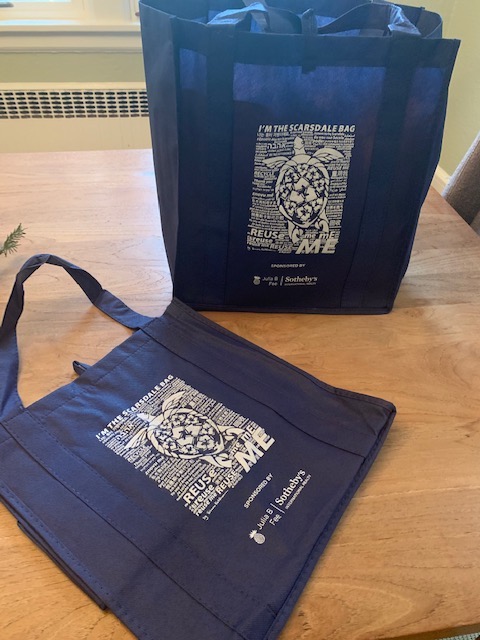 The day has come: On March 1, New York State will enact a plastic ban bag, requiring shoppers to either bring their own reusable bags or pay a five cent fee for each paper bag they use.
The day has come: On March 1, New York State will enact a plastic ban bag, requiring shoppers to either bring their own reusable bags or pay a five cent fee for each paper bag they use.
To avoid paying the fee -- and to do your part to save the environment -- bring your own environmentally friendly bags to carry your purchases. After you shop, remember to put them back in the car to have them on hand for your next trip to the store.
Find out how to get your own free Scarsdale reusable bag here.
Here’s the official note from New York State Department of Environmental Conservation:
Starting March 1, 2020, a new bag waste reduction law will take effect in New York State - where over 23 billion plastic bags are typically used each year. Plastic bag usage affects both our communities and environment. Plastic bags can be seen stuck in trees, as litter in our neighborhoods, and floating in our waterways. From the significant recycling and disposal issues they pose to the harm they can do to wildlife, the negative impacts of plastic bags are easily seen.
As a consumer, you can help and #BYOBagNY - Bring Your Own Bag. Keep reusable bags in your car, or clip folding reusable bags onto your commuting bag or purse so you always have them handy. If you store them near the door or coat closet, you'll be more likely to remember them on the way out. Remember that every time you use a reusable bag, you are doing your part to prevent litter and waste. Using reusable bags makes sense and is the right thing to do. You can also remind your family, friends, and neighbors to bring their reusable bags whenever they shop.
The Bag Waste Reduction Law applies to more than just grocery stores. Whether you're going to the grocery store, clothes shopping, or to a home improvement store, make sure to bring your reusable bags.
Types of Bags You Can Use
While shoppers can bring any type of bag -- including film plastic -- note that there are many alternatives to choose from which are more environmentally friendly. Ideally, a bag should be washable and designed for multiple uses, such as one made from cloth. If you forget to bring a bag with you, many retailers will have reusable bags for sale. An alternative, such as paper, may also be available. Please note that stores are not required to have bags available for customers. Some stores may choose not to switch to paper and may only have reusable bags for purchase. That is why it is important for consumers to #BYOBagNY - Bring Your Own Bag. If you have a small purchase, such as a magazine, candy or drink, you can help our environment by saying "No thank you" to a single use paper bag and carrying the item instead.
The Bag Waste Reduction Law and Who it Affects
Starting March 1, 2020, all plastic carryout bags (other than an exempt bag) are banned from distribution by anyone required to collect New York State sales tax. For sales that are tax exempt, plastic carry out bags are still not allowed to be distributed by anyone required to collect New York State sales tax (unless it is an exempt bag). The law will affect anyone required to collect New York State sales tax, bag manufacturers and consumers. Cities and counties will also be involved. Under the law:
Cities and counties are authorized to adopt a five-cent paper carry-out bag reduction fee. This means that in these areas, a consumer will be charged 5 cents for each paper carryout bag provided at checkout. In areas that have adopted the five-cent paper carryout bag reduction fee, the fee does not apply to SNAP (Supplemental Nutrition Assistance Program) and WIC (Women, Infants, and Children -- a nutrition program) recipients, and they are exempt from paying a paper carryout bag reduction fee for paper carryout bags. One way to avoid paper bag fees no matter where you are across New York State is to always bring your own bag.
stores covered under the NYS Plastic Bag Reduction, Reuse and Recycling Act will still be required to collect plastic bags and other film plastics from consumers for recycling. (Film plastics include items such as bread bags and plastic wraps that come over cases of water, paper towels and other similar items). As a consumer you can help by continuing to recycle these items at participating retailers.
Exempt Bags
Some bags are exempt under the law, so plastic bags may still be distributed to consumers in a few specific circumstances, such as a bag used by a pharmacy to carry prescription drugs, and produce bags for bulk items such as fruits and vegetables. But as a consumer, you can aid in protecting our environment by using reusable bags as much as possible.
Food Scrap Program Reaches Milestone
- Details
- Written by Joanne Wallenstein
- Category: Health
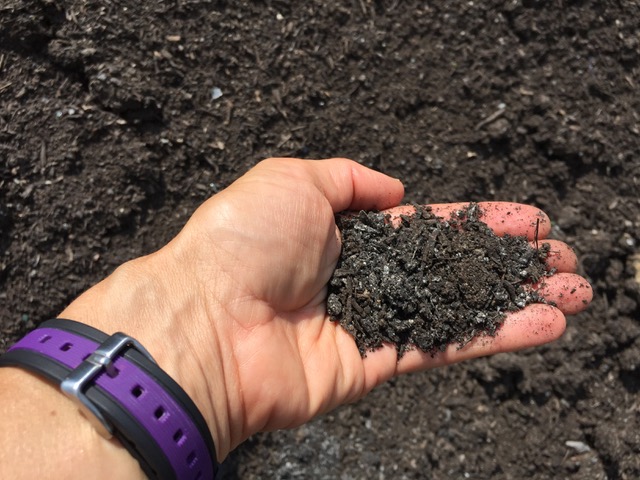 Scarsdale’s Food Scrap Program has now recycled one million pounds of compostable material. The program, which began in January 2017, was the first such initiative in Westchester County and has served as a model for other communities to follow. To-date twenty Westchester municipalities have implemented food scrap recycling programs based on the Scarsdale model.
Scarsdale’s Food Scrap Program has now recycled one million pounds of compostable material. The program, which began in January 2017, was the first such initiative in Westchester County and has served as a model for other communities to follow. To-date twenty Westchester municipalities have implemented food scrap recycling programs based on the Scarsdale model.
One of the main attractions of the Food Scrap Program is that all types of food are accepted including meat, dairy, fish, bones, eggshells, spoiled and cooked foods, seafood and nut shells, bread, rice, pasta, and oily foods. In addition, soft paper products (napkins, tissues, paper towels and wax paper) and products made from natural fibers (e.g., paper coffee filters, wood popsicle sticks and wood/bamboo chopsticks) can also be included.
All of the food scraps and compostable materials collected are taken to a composting facility and turned into compost, which is then used by landscapers, homeowners and farmers. Compost made from Scarsdale’s food scraps is available to residents during the Village’s annual Free Compost Giveback Day in April.
Participation in the Food Scrap Program is easy—starter kits and refill rolls of compostable liner bags can be purchased at the Recycling Center office (110 Secor Road) or at Village Hall (at the Parks & Recreation Dept. desk). Residents can also sign up via email at composting@scarsdale.com.
Program participants find great satisfaction in knowing that what was once thrown in the garbage is now put to such good use. Residents who haven’t yet joined are encouraged to become part of this impactful initiative!
New Location to Purchase Food Scrap Kits and Rolls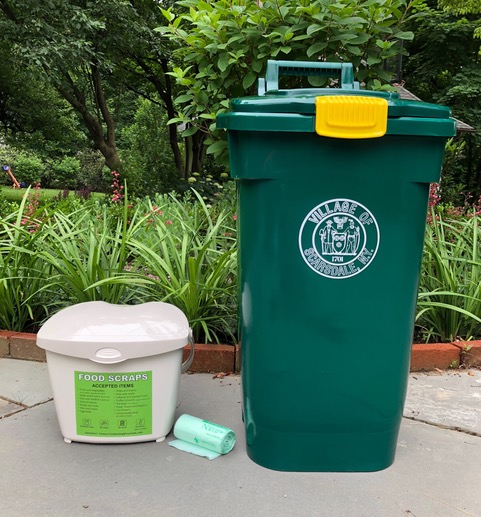
Food Scrap Recycling starter kits and refill rolls of compostable bags are now available at the Parks & Recreation Dept. desk in Village Hall. The desk is open Monday-Friday from 9-5 and accepts, credit and debit cards and checks. Now it is even easier to participate in the Scarsdale Food Scrap Recycling Program! Email composting@scarsdale.com with any questions or to sign up.
87 Year-Old Driver Strikes Pedestrian in Hartsdale
- Details
- Written by Joanne Wallenstein
- Category: Health
 Yet another pedestrian was hit and injured in Greenburgh, this one in Hartsdale at 7:56 am on Saturday February 15.
Yet another pedestrian was hit and injured in Greenburgh, this one in Hartsdale at 7:56 am on Saturday February 15.
The 70 year-old man, who lives on East Hartsdale Avenue, was found lying unconscious in the road, bleeding from the head. He was treated by Greenburgh EMS and taken to Westchester Medical Center in an ambulance where he was admitted.
Video evidence shows that the man was walking south on Central Avenue and then turned onto East Hartsdale Avenue, where he decided to cross the street from the north to south side. At that portion of East Hartsdale Avenue there are two westbound lanes – one for turning left and the other for proceeding straight. The man was in the left lane when he was hit by a car going east on Hartsdale Avenue. The driver did not stop.
Investigation revealed that the 2018 Honda CRV that struck the victim was driven by an 87 year-old Hartsdale man. He was not injured.
This is the ninth pedestrian accident in Greenburgh in recent months.
Anyone who witnessed the accident should call Greenburgh Police at 914-989-1725.
5 Tips for a Healthy Heart
- Details
- Written by Joanne Wallenstein
- Category: Health
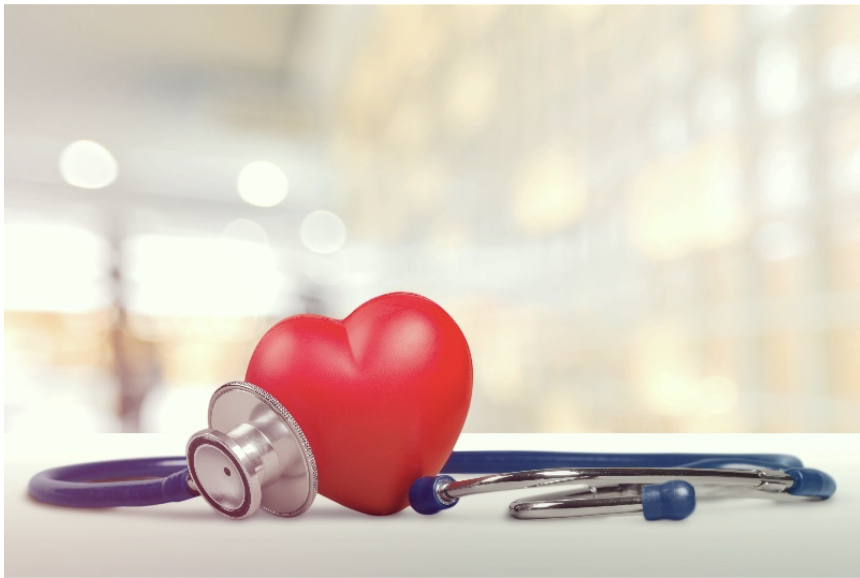 February is American Heart Month, and now’s the time to increase awareness about your heart health. Cardiologists from White Plains Hospital have provided the following information about heart attacks in women, as well as five 5 simple tips for a healthier heart and a longer life.
February is American Heart Month, and now’s the time to increase awareness about your heart health. Cardiologists from White Plains Hospital have provided the following information about heart attacks in women, as well as five 5 simple tips for a healthier heart and a longer life.
The Surprising Facts about Heart Attacks in Women
According to the American Heart Association, heart disease is the No. 1 killer of women in the United States. Yet, heart disease continues to be considered a “mostly male health issue.” Because of this misconception, women who are experiencing signs of a heart attack often don’t seek the immediate, life-saving care they need.
We’ve all seen the symptoms of a heart attack dramatized on TV. A man screams out, grabs his arm, and loses his balance. While this can occur, in women the symptoms of a heart attack are often more subtle. In fact, it is common for women to wait more than six hours after first feeling the symptoms of a heart attack before going to the ER, as they believe they are experiencing non life-threatening conditions like acid reflux, the flu, or normal aging.
What are the signs of a heart attack in women?
Women can feel chest pain, but more often will feel a little chest tightness or some weakness, shortness of breath, or pain anywhere in the upper body, like the back of the neck or jaw, dizziness, nausea or fainting. Surprisingly, chest pain is absent in 43% of women having heart attack. This is a primary reason why women delay seeking treatment or calling 9-1-1. It is important for women to know the signs, and to seek help immediately for any troubling symptoms.
Get Screened
Women continue to lag behind men in getting screened for heart disease. According to the AHA, almost two-thirds (64%) of women who die suddenly from coronary heart disease exhibit no previous symptoms. This is why physicians and cardiologists stress the importance of regular cardiac screening for women.
Lower Your Risk
Lifestyle changes can greatly impact heart health in women. According to the AHA, nearly 80% of cardiac events can be prevented, yet heart disease continues to be a woman’s greatest health threat. To combat this threat, you should consider the following recommendations:
• Schedule an appointment with a medical professional to discuss your personal risk for a heart attack.
• Don’t smoke, or quit now – By quitting smoking, you cut your risk of coronary heart disease by about 50%
• Exercise moderately (or as advised by your medical professional) – The typical recommendation is 30 minutes a day of moderate physical activity. Anything that gets you moving counts, so walk, take the stairs, or park far away and walk to the store. Then, as your body is able to accept a higher level of activity, move more.
• Eat a well-balanced diet – Avoid processed foods and stick to natural, whole foods. We recommend a Mediterranean diet, including lean meat and healthy snacks, for optimal heart health.
While it’s frightening to know that someone dies of a heart attack every 43 seconds, this statistic can be reversed. Make February your month to get heart healthy. Know the symptoms of heart disease, get screened, and practice prevention.
5 Simple Tips for a healthier heart and a longer life
Achieving a healthy lifestyle does not always need to include drastic changes to your daily routine. Here’s how cardiologist Dr. David E. Solarz works wellness into his busy day:
1. Try to get at least 4,400 steps per day. “The easiest way to get this? Take a 30 minute walk every day at least five times a week. You’ll easily reap the cardiovascular benefits.”
2. Substitute fruits and vegetables for meat. “The higher fiber content in produce may help to lower the “bad,” or LDL, cholesterol in your blood. Also, research has shown that a plant-heavy diet can also reduce blood pressure and inflammation.”
3. Avoid trans fats and limit intake of saturated fat. “Fat is important in the diet, but where you get it and what kind makes a difference in overall health. Good fats include unsaturated fat from avocados, nuts, olive oil and some vegetable oils. Try to limit cheese, dairy, fried foods and desserts, which are high in saturated and trans fats.”
4. If trying to lose weight, cut the portion size and break up meals into 5 or 6 smaller portions. “By doing this, you are making sure you have energy available at all times of the day. This helps to better control blood sugar and insulin, preventing sudden drops that cause you to become famished and start overeating.”
5. Finally, meditation and social connections are very important. “More and more research is finding the connection between mindfulness and overall body awareness can result in greater physical and mental health benefits, including better control of blood sugar, as well as improved thinking and memory skills. Getting out a little every day and being social is good for the body and keeps the mind sharp and ready to go.” 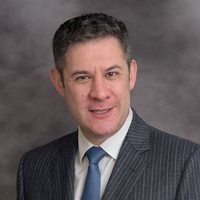 Dr. David E. Solarz is a board-certified cardiovascular disease specialist, with clinical expertise in adult cardiology, advanced and nuclear cardiac imaging, peripheral vascular disease and arrhythmias. To make an appointment at his 33 Davis Avenue, White Plains office, call (914) 849-7180.
Dr. David E. Solarz is a board-certified cardiovascular disease specialist, with clinical expertise in adult cardiology, advanced and nuclear cardiac imaging, peripheral vascular disease and arrhythmias. To make an appointment at his 33 Davis Avenue, White Plains office, call (914) 849-7180.














